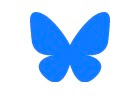Turing Patterns - Another Contribution by a Great Scientist
 |
| Turing Patterns in Biology and Chemistry |
In 1954, Turing published a paper entitled "On the Chemical Basis of Morphogenesis," in which he suggested that patterns in biological systems might arise from chemical patterns that form when activator and inhibitor species interact.
An example, found decades after Turing published this work, is shown above and to the left. A photo of a patterned fish is compared to a petri dish containing a chemically-reacting system that produces similar patterns that arise from the interplay of chemical reaction kinetics and diffusion. Thanks to my friend Irv Epstein at Brandeis University for this photo from his excellent website.
 |
| Turing and some examples of Turing patterns, via Wired |
As a young graduate student, I was presented with a possible dissertation topic involving the chemical basis of morphogenesis. At the time, I didn't even know what morphogenesis was, but I soon learned that it was the study of the development of form and pattern, specifically in embryos.
It didn't take me long to find my way to Turing's paper and to begin the process of trying to extend his work to systems where the patterns were formed by ions, electrically charged species. Because the chemical species had a charge, the resultant pattern had a non-uniform electric field that, we found, could guide the transport of other charged species to particular places in the embryo. My PhD thesis, submitted oh-so-many-moons ago, was a direct extension of Turing's work to the development of patterned electric fields in developing embryos.
Much has been written about Turing's personal life, his possible death by suicide and his work during the war, but I am glad to see at least some attention now being given to his far-ranging and influential ideas in theoretical science. These ideas provided the foundation for much of what we now understand about complex systems.

yes! I had thought it was two different Turings, can't believe one person could contribute so significantly in multiple fields. He is also celebrated as a gay scientist.
ReplyDeleteYes, Janice - he was a remarkable person! The BBC article I link to in this post has a lot of details about the persecution he suffered because he was gay. Although a lot of people assumed this is what led him to commit suicide, some are now suggesting that his death was an accident. He continues to be an interesting person, even after he's been gone for decades!
DeleteAs a scuba diver I was struck by the photo of the fish pattern next to the petri dish. So interesting. What a terrible loss to humanity, and how thankless the British government was for his contributions to the war effort.
ReplyDeleteThanks, Raima.